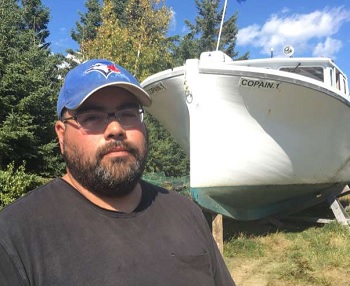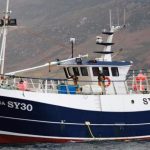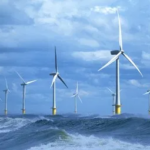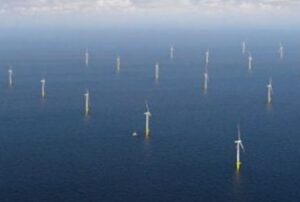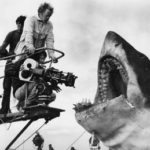Daily Archives: September 18, 2018
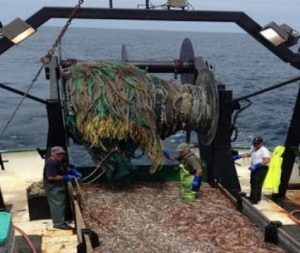
Twenty-Five Foot Basking Shark Led to Fishing Vessel Capsize
The U.S. National Transportation Safety Board has released an investigation report into the sinking of the commercial fishing vessel Langley Douglas in September 2017, noting the presence of a 25-foot basking shark in the catch and the captain’s subsequent decision making. The 79-foot-long, 143-gross ton vessel developed a port list, capsized and subsequently sank 60 miles east of Cape Charles, Virginia. A U.S. Coast Guard helicopter rescued the five people on board. No injuries or pollution were reported. The Langley Douglas was valued at $1.95 million.,, At 0910 on September 11, 2017, the captain ordered the crew to haul in the net and prepare the main deck and hog pen area. The crew also placed scupper plates in front of the port and starboard freeing ports to prevent catch from going overboard. The captain told investigators that he remembered seeing the cod-end sensor flashing, >click to read<23:26
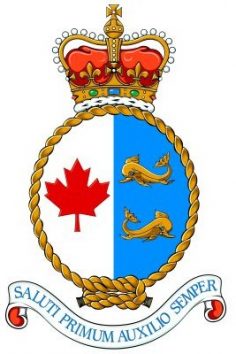
Search underway for 2 missing fishermen off Tignish, P.E.I.
A search is underway for two people missing from a boat that capsized late Tuesday afternoon in Tignish, P.E.I. The Joint Rescue Coordination Centre in Halifax is co-ordinating the search. “At approximately 5 o’clock local time, the Joint Rescue Coordination Centre here in Halifax received a report of two people in the water near Tignish, P.E.I.” said Maj. Mark Gough, senior public affairs office with Maritime Forces Atlantic in Halifax.,,, Local fishermen say the seas were rough and dangerous Tuesday in the area due to a strong wind from the northeast. >click to read<21:46
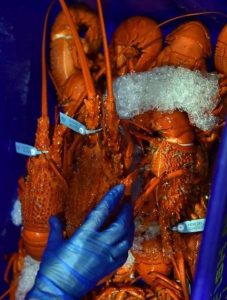
‘Barely a scallop’: fears oil and gas exploration will destroy fishery
There are calls for a moratorium on seismic surveys by the oil and gas industry from members of the fishing industry after new Australian research shows it has serious impacts on invertebrates such as lobster, scallop, abalone and crab. The calls come as three different oil and gas companies have told industry bodies they want to carry out seismic explorations in Otway basin this summer. Tasmanian Seafood Industry Council (TSIC) chief executive, Julian Harrington, says: “This is a big issue for our industry and we now have research that backs our concerns.” >click to read<20:19
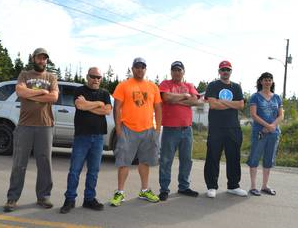
Fishermen block entrance to Donkin Mine – “We want the mine to shut down”
Angry fishermen say a blockage of the entrance to the Donkin Mine on Tuesday is just the beginning if something isn’t done about the mine’s plans to ruin their industry. “We need immediate action on issues or we’re going to come back and do this again,” said Port Morien fisherman Don Messenger. Messenger said many of them don’t want coal transportation by barging, rail or by road, they simply want the mine to close. They are hearing seismic testing is scheduled within the next couple weeks but other issues include barging, contamination of their lobsters and the impact on the fishermen’s livelihood. “When seismic comes and the contamination of the coal, it’s going to destroy this fishery,” he said. >click to read<18:35
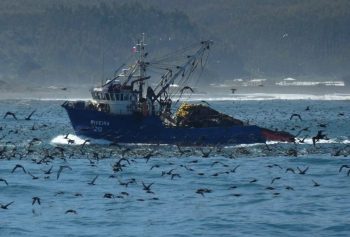
Chile purse seine project nominated for conservation award
In October, the Pink-footed Shearwaters begin to arrive on Robinson Crusoe Island, off the coast of Chile. “These [fishing fleets] are fishing in the same areas as these birds. They are capturing the very fish these seabirds eat,” said Cristian Suazo, a member of the Albatross Task Force Chile, which is working to combat bycatch. “The fleets are also out at the same time these birds, many of which are migratory, have the greatest need for food to both refuel and to feed their young.”,,, In Chile, the ATF has been working since 2007, where it began by trying to reduce bycatch in pelagic longline fisheries. In 2013 though, the team noted that there was also bycatch coming from purse seine fisheries, and began working to reduce bycatch in this industry as well. >click to read<17:43

Four crewmembers rescued from capsized fishing vessel near Sabine Pass, Texas
The Coast Guard assisted in the rescue of four crewmembers from a fishing vessel after it capsized near Sabine Pass, Texas, Tuesday morning. Eighth Coast Guard District watchstanders in New Orleans received an emergency position indicating radio beacon signal from the 65-foot fishing vessel Captain M&M, which provided an approximate location of the vessel, and launched an Air Station Houston MH-65 Dolphin helicopter aircrew. >click to read<13:31
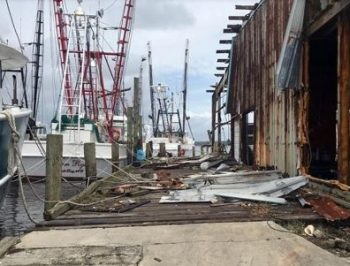
Hurricane Florence: Shrimpers talk storm damage, losses
Davis Seafood is a family owned and operated business in Sneads Ferry, a little north up the river from similarly family owned and operated businesses Mitchell Seafood and B. F. Millis & Sons Seafood. They all specialize in shrimping, although they sell clams and various fish products as well. The water is their livelihood, and all three families suffered physical and financial setbacks from the recent downpour and winds. Davis Seafood had already been out of business for a week before the hurricane, according to Davis. They were out for the week of the storm. And they were anticipating another week of cleanup and recuperation before the business was back in operation. “We know all about it,” Davis said. “We’ve done it before. It’s just part of the livelihood.”>click to read<
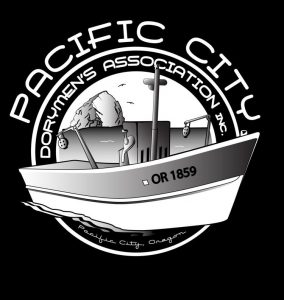
Dory Fleet holds special piece of maritime history
Pacific City, a beautiful stretch along the stunning Oregon Coast, prides itself in being “The Home of the Dory Fleet.” What is a dory? How did dory fishing develop into what it is today in Pacific City? In general, a dory is a 16- 23-foot lightweight vessel with a flat bottom and tall sides made from wooden planks. Our traditional double ended dories were developed in New England in the early 18th Century. Designed for maneuverability, balance, and fairly easy rowing, a dory provides the skilled operator with a stable platform for navigating and hauling large amounts of fish. >click to read<10:25
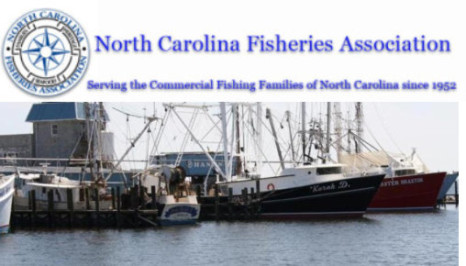
NCFA – More Hurricane Florence info on ice, storage facilities, hot showers and DMF info
Armistead Perry of Evans Seafood and Evans Transport said he has some freezer space available and cooler space if you need to get inventory from your facility to save it.,, Wanchese Fish Co. has offered the use of their cold storage facility in Suffolk VA for anyone that needs it.,, Regarding our industry helping others, also let us know what you may be able to do to help, such as ice or whatever else you can assist with. ,,, >click to read<10:01
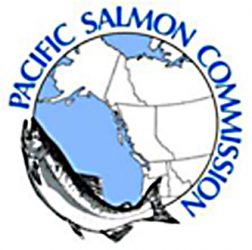
Pacific Salmon Treaty – Alaska salmon negotiators accept fewer ‘treaty fish’
For more than 30 years, the Pacific Salmon Commission has allocated salmon stocks shared between the U.S. and Canada. It’s re-negotiated every 10 years, and the latest version expires at the end of 2018. Formal talks finished in mid-August. Now, the numbers are out: Alaska will accept a 7.5 percent reduction, compared to 12.5 percent for Canada. In Washington and Oregon, the cuts range from 5 to 15 percent. “There’s some that would consider it to be winners and losers and I think in this case, I think everybody was equally disappointed,” said Alaska Fish and Game Deputy Commissioner Charlie Swanton, who headed Alaska’s delegation. >click to read<08:55
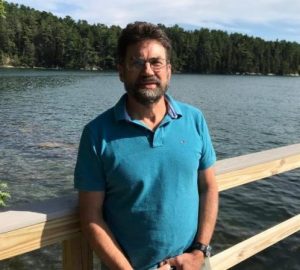
Discovery of immature lobsters in deep Down East waters may be good news for industry
The discovery of baby lobsters in the deep waters off eastern Maine could be good news for the future of the U.S.’s most valuable fishery. Since 1989, scientists led by University of Maine professor Richard Wahle have looked for baby lobsters at 100 shallow-water test sites from Rhode Island to New Brunswick to monitor the health of this fishery. The number of babies found in the samples started to decline about a decade ago, leading scientists to worry that a population bust may be looming. “We couldn’t find the settlers,” Wahle said Monday. “Increasingly, we found they weren’t showing up where we had always found them.” >click to read<07:42






